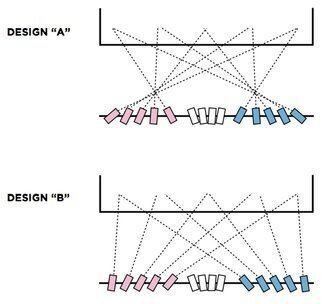shamanskyh
Member
I work at my high school doing technical and facility work in our small theater (originally a gym, but upgraded in '01) and we recently had our director leave very suddenly. As a PK-12 school, we set up for 6 elementary school shows each year and we usually keep a general lighting scheme.
We need to refocus our front house electric bar, but I'm wondering where to aim (it's a newbie question, I know...) We have five cool-gelled ellipsoidals on house right and five warm-gelled ellipsoidals on the other. (There are also four ungelled ellipsoidals in the center to light risers in front of the thrust stage that we have.
Again, our theater is pretty small with 20-25 foot ceilings, and the bar is maybe 20-25 feet away from the stage. Which aim of the two I drew up is correct? (or should I be doing something else entirely?)
We need to refocus our front house electric bar, but I'm wondering where to aim (it's a newbie question, I know...) We have five cool-gelled ellipsoidals on house right and five warm-gelled ellipsoidals on the other. (There are also four ungelled ellipsoidals in the center to light risers in front of the thrust stage that we have.
Again, our theater is pretty small with 20-25 foot ceilings, and the bar is maybe 20-25 feet away from the stage. Which aim of the two I drew up is correct? (or should I be doing something else entirely?)




